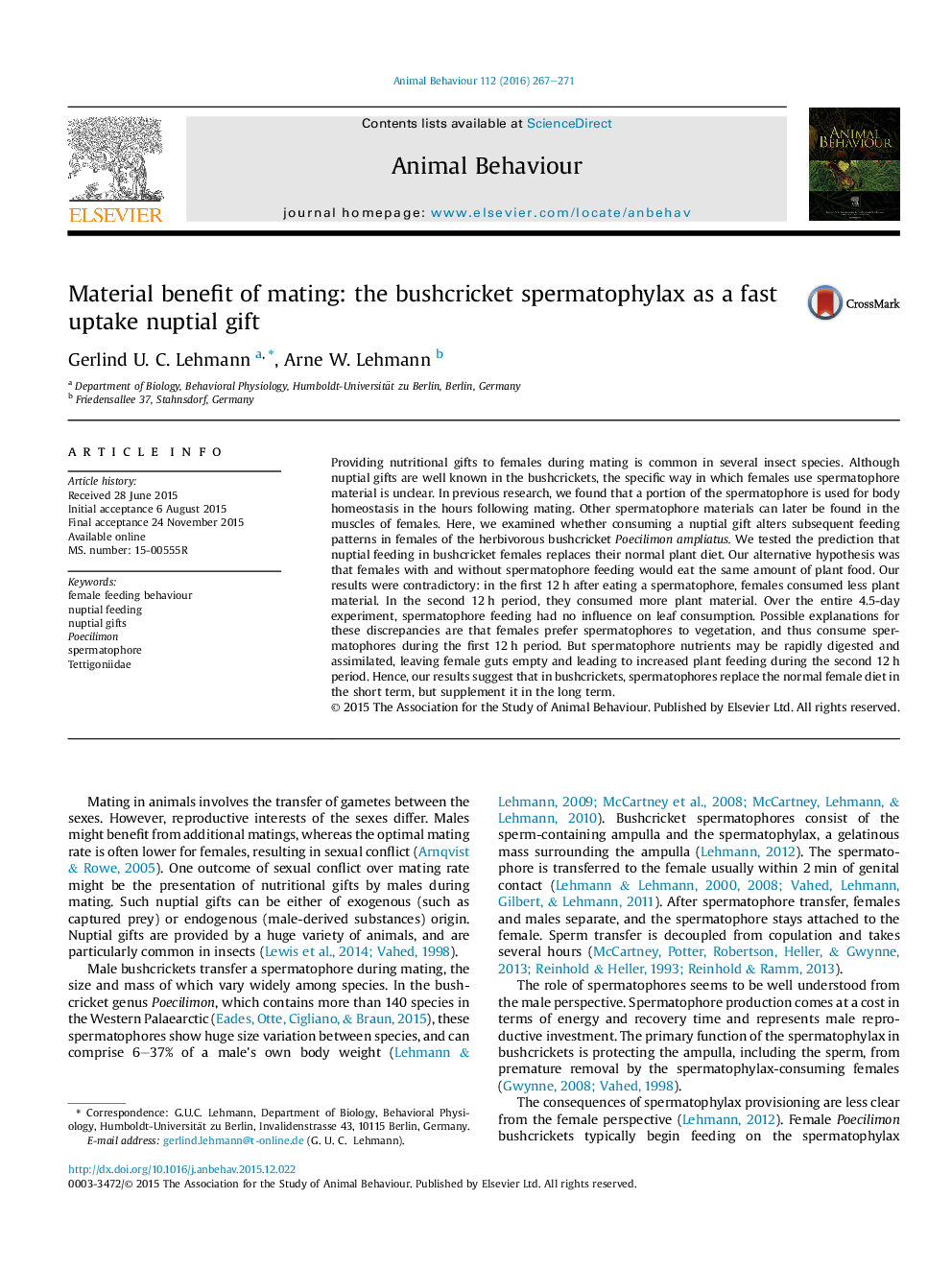| کد مقاله | کد نشریه | سال انتشار | مقاله انگلیسی | نسخه تمام متن |
|---|---|---|---|---|
| 8489341 | 1552216 | 2016 | 5 صفحه PDF | دانلود رایگان |
عنوان انگلیسی مقاله ISI
Material benefit of mating: the bushcricket spermatophylax as a fast uptake nuptial gift
دانلود مقاله + سفارش ترجمه
دانلود مقاله ISI انگلیسی
رایگان برای ایرانیان
موضوعات مرتبط
علوم زیستی و بیوفناوری
علوم کشاورزی و بیولوژیک
علوم دامی و جانورشناسی
پیش نمایش صفحه اول مقاله

چکیده انگلیسی
Providing nutritional gifts to females during mating is common in several insect species. Although nuptial gifts are well known in the bushcrickets, the specific way in which females use spermatophore material is unclear. In previous research, we found that a portion of the spermatophore is used for body homeostasis in the hours following mating. Other spermatophore materials can later be found in the muscles of females. Here, we examined whether consuming a nuptial gift alters subsequent feeding patterns in females of the herbivorous bushcricket Poecilimon ampliatus. We tested the prediction that nuptial feeding in bushcricket females replaces their normal plant diet. Our alternative hypothesis was that females with and without spermatophore feeding would eat the same amount of plant food. Our results were contradictory: in the first 12Â h after eating a spermatophore, females consumed less plant material. In the second 12Â h period, they consumed more plant material. Over the entire 4.5-day experiment, spermatophore feeding had no influence on leaf consumption. Possible explanations for these discrepancies are that females prefer spermatophores to vegetation, and thus consume spermatophores during the first 12Â h period. But spermatophore nutrients may be rapidly digested and assimilated, leaving female guts empty and leading to increased plant feeding during the second 12Â h period. Hence, our results suggest that in bushcrickets, spermatophores replace the normal female diet in the short term, but supplement it in the long term.
ناشر
Database: Elsevier - ScienceDirect (ساینس دایرکت)
Journal: Animal Behaviour - Volume 112, February 2016, Pages 267-271
Journal: Animal Behaviour - Volume 112, February 2016, Pages 267-271
نویسندگان
Gerlind U.C. Lehmann, Arne W. Lehmann,